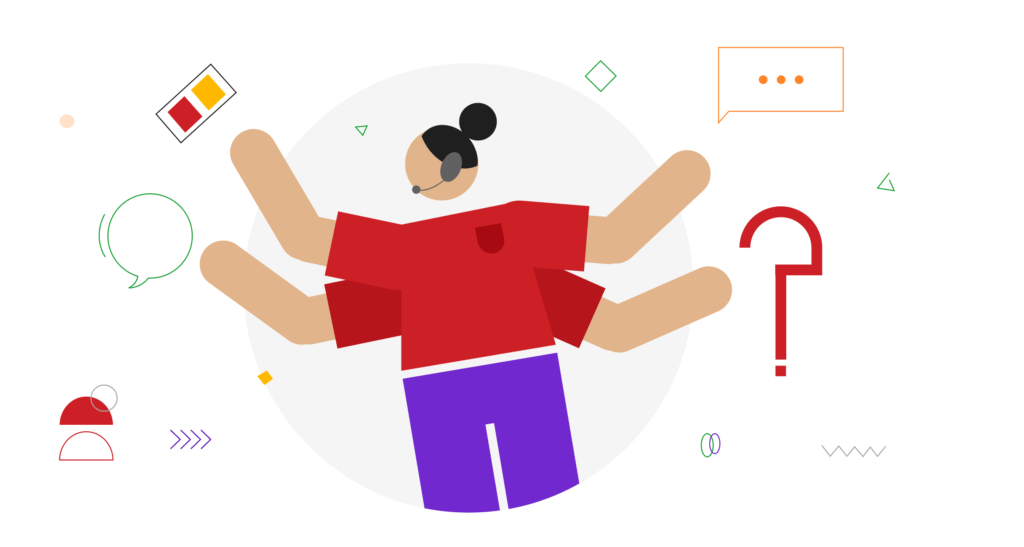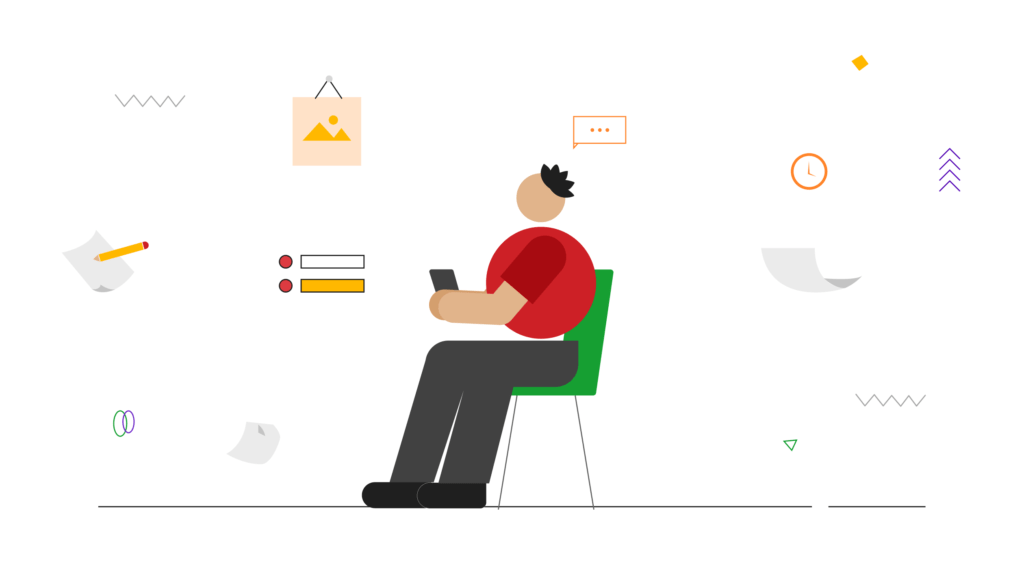In the rapidly evolving digital landscape, the role of UI/UX designers has become pivotal in shaping positive user experiences. These designers are tasked with ensuring that digital products not only look visually appealing but also offer seamless and meaningful interactions. This article explores the journey on How to become a UI UX designer in 2024? Shedding light on essential concepts, skills, and steps for aspiring designers.

What Is UI Design?
At its core, UI design, or User Interface design, is the meticulous process of designing the visual elements of a digital interface – be it a website, mobile application, or software. It’s the marriage of aesthetics and functionality, aiming to create an interface that not only looks good but also provides an effortless and enjoyable user experience.
The Building Blocks of UI:
UI design comprises various elements, each playing a crucial role in the overall user experience.
Visual Design: Visual aesthetics are the first thing users notice. A harmonious blend of color schemes, typography, imagery, and iconography contributes to a visually appealing interface. Consistency in design elements creates a cohesive and recognizable brand identity.
Layout and Composition: How information is organized on a screen is vital for user comprehension. UI designers carefully structure layouts, ensuring a logical flow that guides users seamlessly through the interface. Attention to spacing, alignment, and hierarchy enhances clarity.
Interactivity: UI design is not static; it’s a dance of interactive elements. Buttons, sliders, and menus respond to user actions, providing feedback and creating a dynamic and engaging user experience. Smooth transitions and animations enhance the sense of fluidity.
Usability: The ultimate goal of UI design is to make the interface easy to use. Intuitive navigation, clear calls-to-action, and user-friendly interactions contribute to a positive user experience. A well-designed UI anticipates user needs and minimizes friction.
The Role of UI Design in User Experience (UX):
Before understanding How to become a UI UX designer in 2024? Its crucial to know about the role. While UI design focuses on the aesthetics and presentation of an interface, it is inseparable from User Experience (UX) design. UX encompasses the entire journey a user takes with a product, and UI design is a critical element within that journey.
First Impressions: The UI is often the first point of contact between a user and a digital product. A visually appealing and well-designed interface creates a positive first impression, setting the stage for a favorable overall user experience.
Navigation and Flow: A thoughtfully designed UI guides users effortlessly through the interface, ensuring a smooth and intuitive navigation experience. Clear paths and well-defined interactions contribute to a seamless user journey.
Brand Identity: The UI is a canvas for expressing and reinforcing a brand’s identity. Consistent use of brand colors, logos, and visual elements fosters brand recognition and builds a connection between the user and the brand.
What is UX Design?
User Experience design is the holistic approach to understanding and enhancing every facet of a user’s interaction with a product. It goes beyond the visual aesthetics, encompassing usability, accessibility, and the overall emotional response elicited from the user.
What Do UX Designers Do?
To comprehend How to become a UI UX designer in 2024? Lets first explore how UX designers shoulder the responsibility of a product’s end-to-end development, emphasizing user interactions and experiences. Tasks include user research, persona development, information architecture, wireframing, prototyping, high-fidelity design, and user testing. The broad scope of UX design spans various projects across industries.
Understanding the User:
The cornerstone of UX design is empathy. Designers delve into the mindset of users, aiming to comprehend their needs, behaviors, and motivations. This user-centric approach ensures that the design process revolves around creating solutions that resonate with the end user.
The UX Design Process:
Research: UX design kicks off with extensive research. Designers delve into user demographics, conduct surveys, and analyze competitors to gather insights that inform the design direction.
Wireframing: Creating skeletal outlines of the interface, known as wireframes, helps designers establish the basic structure and layout. This phase focuses on functionality and user flow.
Prototyping: Prototypes bring the design to life, allowing for interactive testing. User feedback is invaluable at this stage, guiding refinements to ensure a seamless and intuitive experience.
Testing: Rigorous testing ensures that the design meets user expectations. Usability testing, A/B testing, and user feedback loops help identify and address any pain points.
The Impact on Business:
A positive user experience is not just a nicety; it’s a strategic business advantage. Satisfied users are more likely to engage, convert, and become brand advocates. UX design, therefore, becomes a powerful tool for driving customer loyalty and fostering business success.
How to become a UI UX designer in 2024?
Embarking on a journey to become a UI/UX designer is an exciting venture filled with creativity and innovation. To make this journey both enriching and rewarding, it’s crucial to immerse yourself in a supportive learning environment that caters to the unique demands of the design world.
1. Comprehensive Learning: Start by acquiring a deep understanding of UI/UX principles. Look for courses that cover the essentials, from design principles and color theory to user psychology. A holistic curriculum ensures a well-rounded skill set that is essential for crafting exceptional user experiences.
2. Industry-Experienced Mentors: Learning from seasoned professionals in the industry is invaluable. Seek courses that provide mentorship from experienced UI/UX designers. Industry mentors not only pass on practical knowledge and best practices but also offer insights into the real-world challenges and trends shaping the design landscape.
3. Hands-On Activities: Theory is essential, but true mastery comes through hands-on experience. Opt for courses that emphasize practical application, encouraging you to bring your design concepts to life. Engaging in real-world projects allows you to put theory to the test and refine your skills in a practical setting.
4. Small Batches for Personalized Attention: In a world of mass education, personalized attention can make a significant difference. Choose courses that maintain smaller class sizes, fostering an environment where instructors can provide individualized feedback and guidance. This ensures a more tailored learning experience that caters to your unique strengths and areas for improvement.
5. 100% Job Assurance: The ultimate goal of your UI/UX design journey is to secure a fulfilling job in the field. Look for courses that offer 100% job assurance, providing you with the confidence that your skills will be recognized and valued in the industry. These programs often include career guidance and placement support to help you seamlessly transition from learning to the professional realm.
These help us understand about How to become a UI UX designer in 2024?
Unlock Your Design Future:
UX Professional Track If you’re ready to turn your design aspirations into reality, check out our UX Professional Track. Offering a comprehensive curriculum, industry mentorship, hands-on projects, personalized attention, and 100% job assurance, this track is designed to set you on the path to your dream design job. Join us on this exciting journey, and let’s craft extraordinary user experiences together.
In just a few dedicated steps, you can transform your passion for design into a rewarding career. Choose the right learning environment, embrace mentorship, put theory into practice, and secure a pathway to success in the dynamic world of UI/UX design.
Skills Required to Become a UX Designer
Here are the key skills that will set you on the path to success in the dynamic world of UX design.
1. User Research: Anchored in empathy, user research is the cornerstone of UX design. The ability to conduct thorough user research, including interviews, surveys, and usability testing, is crucial for understanding user behaviors, needs, and preferences.
2. Wireframing and Prototyping: Translate ideas into tangible concepts through wireframing and prototyping. Proficiency in tools like Sketch or Figma is essential for creating low-fidelity wireframes and interactive prototypes, allowing for iterative testing and refinement.
3. Information Architecture: Crafting a seamless user experience requires a solid grasp of information architecture. Organize and structure content in a way that facilitates intuitive navigation, ensuring users can find what they need effortlessly.
4. Interaction Design: Bring interfaces to life by mastering interaction design. Understand how users will engage with your designs and create fluid, responsive interactions that enhance the overall user experience.
5. Visual Design: While not the sole focus, a UX designer should possess a keen eye for visual design. Understand principles of color theory, typography, and layout to create interfaces that are not only functional but visually appealing.
6. Collaboration and Communication: Effective communication is paramount in UX design. Collaborate seamlessly with cross-functional teams, stakeholders, and developers. Clearly articulate design decisions and incorporate feedback for continuous improvement.
7. Prototyping Tools: Become proficient in industry-standard prototyping tools like InVision, Axure, or Adobe XD. These tools facilitate the creation of high-fidelity prototypes that closely simulate the end-user experience.
8. Empathy and User Advocacy: Cultivate empathy for users throughout the design process. Advocate for user needs and preferences, ensuring that design decisions align with creating a positive and inclusive user experience.
9. Continuous Learning: The world of UX design is ever-evolving. Stay curious and committed to continuous learning. Keep abreast of industry trends, emerging technologies, and design methodologies to remain at the forefront of the field.
10. Problem-Solving Skills: UX designers are problem solvers at heart. Develop a mindset that thrives on analyzing challenges and devising innovative solutions to enhance user interactions and experiences.

What Do UI UX Designers Do?
Here’s a glimpse into the multifaceted world of UI/UX designers and the tasks that define their dynamic role.
User Research and Analysis: UI/UX designers commence their journey by delving into user research. They analyze user behaviors, needs, and preferences through surveys, interviews, and usability testing. This foundational step lays the groundwork for informed design decisions.
Wireframing and Prototyping: Creating the skeletal structure of an interface comes next. Designers utilize wireframing to outline the layout and flow of a digital product. Prototyping then transforms these static outlines into interactive models, facilitating iterative testing and refinement.
Information Architecture: Crafting an intuitive and organized structure for information is a core responsibility. Designers focus on creating logical information architecture to ensure that users can effortlessly navigate through the digital environment.
Interaction Design: The art of making interfaces come to life falls under interaction design. Designers choreograph user interactions with elements like buttons, forms, and animations, ensuring a seamless and enjoyable user experience.
Visual Design: While often overlapping with graphic design, visual design in the UI/UX realm involves creating aesthetically pleasing interfaces. Designers focus on color schemes, typography, and imagery to ensure a visually cohesive and engaging user interface.
Collaboration and Communication: UI/UX designers are collaborators at heart. They work closely with developers, product managers, and stakeholders to ensure a shared vision. Effective communication is key, as designers articulate design decisions and incorporate feedback seamlessly.
Usability Testing: Once designs are implemented, designers conduct usability testing to assess the real-world effectiveness of their creations. User feedback is incorporated to refine and enhance the user experience continuously.
Adaptation to Emerging Trends:
In a rapidly evolving digital landscape, UI/UX designers stay attuned to emerging trends, technologies, and design methodologies. This adaptability ensures that their designs remain innovative and aligned with user expectations.
Difference Between UX and UI Designers
While UX designers focus on overall user experience, UI designers concentrate on the visual aspects of digital products. UX ensures a positive and meaningful experience, while UI crafts the look and feel.

UI UX Designer Salary
UI/UX designers are in demand, and salaries vary based on experience. Entry-level designers earn an average of 4.8 Lakhs per year, while mid-level designers can expect 8.1 Lakhs annually.
Conclusion
How to become a UI UX designer in 2024? Its a journey marked by learning, creativity, and practical experience. Grasp the fundamental concepts, refine your aesthetic sense, and immerse yourself in hands-on projects. Seek feedback, continuously improve, and build a strong portfolio. Remember, success in UI/UX design is a gradual process, and each step forward contributes to your growth.
To explore more about UI UX Design, check out our UX Professional Track. Unleash your potential in the dynamic world of UI/UX design and shape the future of digital experiences.
In summary, the path to UI/UX design excellence involves continuous learning, practical application, and a commitment to creating remarkable digital experiences. Start your journey today and join our UX Professional Track Course to elevate your skills and career in UI/UX design.